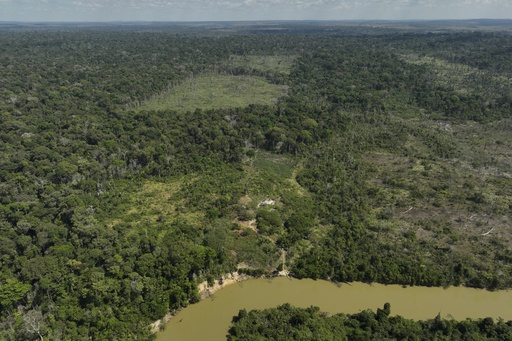
AGUA CLARA, Brazil — Recent reports reveal a significant decline in deforestation rates within Brazil’s Amazon rainforest, recorded at a striking 30.6% reduction from the previous year, marking the lowest level of forest destruction seen in nearly a decade.
Over the course of 12 months, the Amazon lost approximately 6,288 square kilometers (2,428 square miles) of its forested area, which is roughly the equivalent of the state of Delaware in the United States. These findings were disclosed during a press briefing at the presidential palace in Brazil, presenting a stark contrast to the policies of former President Jair Bolsonaro, who favored agribusiness development at the expense of environmental conservation, leading to a peak in deforestation rates over a 15-year period during his administration.
In addition to the Amazon, deforestation rates within Brazil’s Cerrado region—known for its rich biodiversity—also saw a decline, down by 25.7%. This marks the first decrease in five years, although the affected area still totaled 8,174 square kilometers (3,156 square miles). Unlike the Amazon, the Cerrado has fewer legal protections, putting its ecological integrity at greater risk.
Although the federal government has made strides in combating Amazon deforestation, it still faces backlash from environmental activists for endorsing projects potentially detrimental to forest conservation. Critics highlighted plans including the construction of a highway through a pristine forest zone, oil extraction at the mouth of the Amazon River, and the establishment of a railway intended for transporting soybeans to ports in the Amazon region.
It is important to note that Brazil’s monitoring mechanism assesses deforestation from August 1 to July 30, meaning the recent report does not account for destruction in the months leading up to its release. An unprecedented drought has created conditions ripe for forest fires, which consumed land area greater than that of Switzerland. Notably, much of the fire-related damage is categorized as degradation rather than clear-cut land loss since the flames primarily affect ground-level foliage instead of reaching the tree tops. The true extent of these fires will be evaluated in the upcoming months through satellite imagery.
Government officials are wary that the rate of deforestation could potentially rise again next year as the city of Belem gears up to host the annual COP30 conference, a significant U.N. climate event.
The Amazon rainforest, encompassing an area larger than India, is home to the largest rainforest in the world, with around two-thirds of its expanse situated within Brazil. It plays a critical role in sequestering carbon dioxide, a principal greenhouse gas driving climate change, thereby significantly contributing to the planet’s climate stability. Furthermore, the Amazon basin is a crucial reservoir of fresh water, containing approximately 20% of the Earth’s supply and supports a rich diversity of life, including about 16,000 known species of trees.
